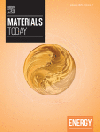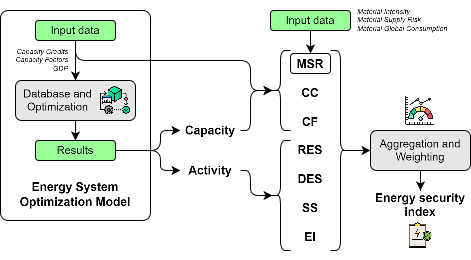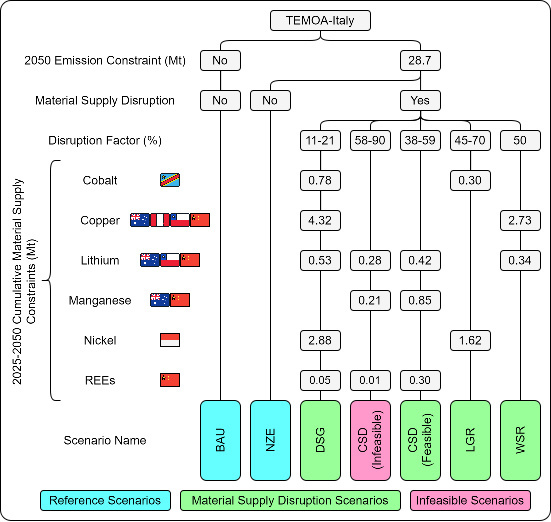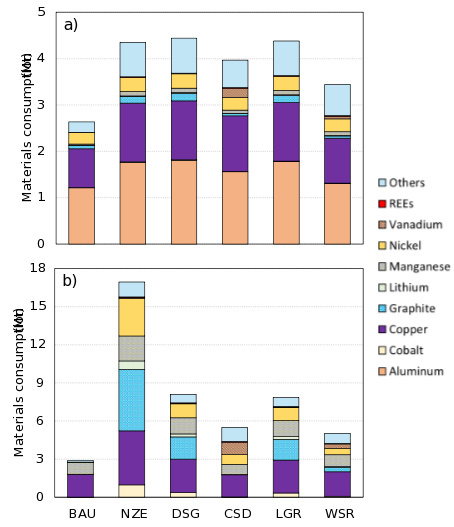New publication on Materials Today Energy
 Finally‼️
Finally‼️
Our research on evaluating energy security, focusing on the vulnerability of materials supply chain, is now publicly available.
As the world races towards a more sustainable future, policymakers are under huge pressure to incentivize investments in clean technologies such as solar PV, storage batteries and electric vehicles. However, a hasty energy transition could inadvertently increase the supply risk associated with the supply chains of these technologies.
Our study delves into the future of Italy's energy system using the TEMOA-Italy energy system optimization model (ESOM). We analyzed materials consumption under various supply chain disruption scenarios, assessing the impact on energy security.
We explored how the supply disruption of key minerals led to scenarios with lower materials consumption, driven by a shift towards less material-intensive technologies. This, in turn, resulted in a lower overall material supply risk (MSR).
#materials #sustainability #energysecurity #energypolicy
Abstract
The energy transition requires the deployment of clean energy technologies, which typically requires critical raw materials. Their supply chains are characterized by high geographical concentration and political instability, thus leading to potential supply chain bottlenecks and negative impacts on the security of energy systems. However, these aspects are not considered in traditional energy security metrics. To address this lack, this paper proposes a novel energy security metric to study the impact of potential materials supply chain bottlenecks on future energy systems. First, a comprehensive metric is developed by including the supply risks associated with clean energy technologies. Second, the metric is applied to materials supply disruption scenarios. The case study is the Italian energy system, though the TEMOA-Italy open model. The results show that transport is the sector most contributing to the material consumption and mostly affected by the considered materials disruption causes, especially concerning the battery electric vehicles penetration. On the contrary, the power sector is minorly influenced by the introduction of supply disruptions except for storage technologies. Lastly, the material supply risk dimension strongly influences the overall energy security of the system, which increases in disruption scenarios when a lower consumption of critical raw materials is forced.




